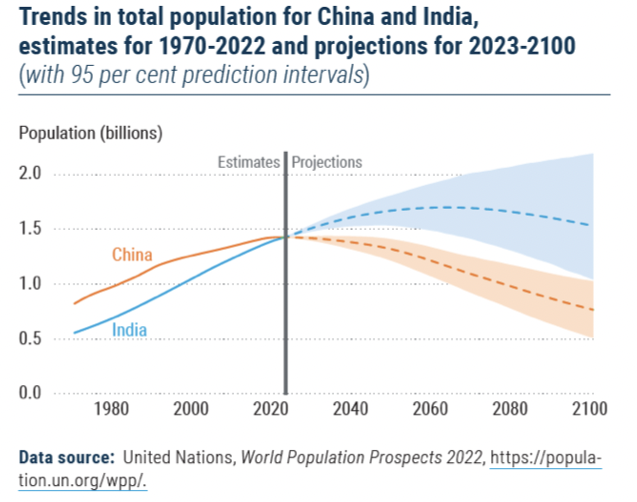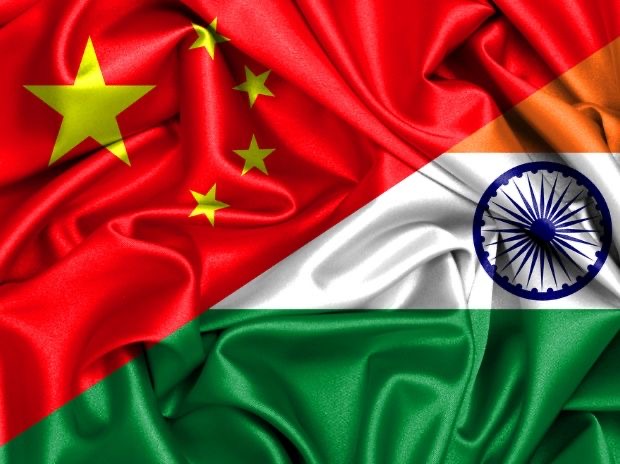China and India, with their vast populations comprising more than one third of the world’s total, have diasporas that naturally rank among the largest globally. When considering both diasporic communities together, their combined populations amount to approximately 80 million to 90 million individuals.

What are Diasporas?
Diasporas are a significant and defining aspect of the modern globalised world. They consist of individuals who reside outside their home country but maintain social, cultural, and emotional ties to their country of origin. Factors such as political, economic, historical, and environmental circumstances can either attract or compel people to leave their home country, resulting in the formation of diasporas. It is estimated that there are approximately 230 million individuals who belong to various diasporic communities worldwide.
China and India, with their vast populations comprising more than one third of the world’s total, have diasporas that naturally rank among the largest globally their combined populations amount to approximately 80 million to 90 million individuals, these diasporas have made significant contributions across various sectors, leaving a lasting impact on a global scale.
Cultural Impact
The Indian and Chinese diasporas have enriched the cultural tapestry of countries they have settled in. Through their traditions, languages, cuisine, arts, and festivals, they have introduced vibrant and diverse elements to their host societies. Chinatowns and Little India’s have become iconic cultural hubs in numerous cities worldwide, acting as focal points for preserving and promoting their unique cultural heritage. Bollywood films, Indian classical dance, Chinese calligraphy, and martial arts have gained popularity and captivated audiences far beyond their homeland.
Economic Impact
The economic contributions of the Indian and Chinese diasporas cannot be overstated. Their entrepreneurial spirit, business acumen, and skilled workforce have fueled economic growth and innovation in their host countries. Indian and Chinese professionals have excelled in various industries, including technology, finance, medicine, and manufacturing, occupying leadership positions and starting successful enterprises. Remittances sent back to their countries of origin have also played a vital role in stimulating economic development and improving living standards.
Trade and Investment
The diasporas act as crucial bridges for trade and investment between their host countries and their countries of origin. Members of the Indian and Chinese diasporas have established networks and connections that facilitate bilateral trade, fostering economic cooperation between nations. Furthermore, their knowledge of local markets, languages, and cultural nuances has proven invaluable for companies seeking to expand into India and China, opening doors for mutually beneficial partnerships and investments.
Political Influence
The Indian and Chinese diasporas wield political influence, both in their host countries and in their countries of origin. They have actively participated in local politics, engaging in civic activities, and representing the interests of their communities. In host countries with significant Indian or Chinese populations, diasporic communities have managed to secure political positions, thereby shaping policies and advocating for issues that affect their respective communities.
Education and Research
The Indian and Chinese diasporas have made substantial contributions to education and research. Many individuals from these communities have excelled in academia, research institutions, and renowned universities, contributing to advancements in various fields, including science, technology, engineering, and mathematics. Their expertise and intellectual capital have played a crucial role in driving innovation and fostering cross-cultural collaboration.
The Indian and Chinese diasporas have left an indelible mark on the global stage. Their cultural, economic, political, and educational contributions have helped shape a more interconnected and diverse world. As these diasporas continue to grow and evolve, their influence is set to expand even further. By harnessing their collective strengths, the Indian and Chinese diasporas have become powerful agents of change, fostering understanding, cooperation, and prosperity on a global scale.













